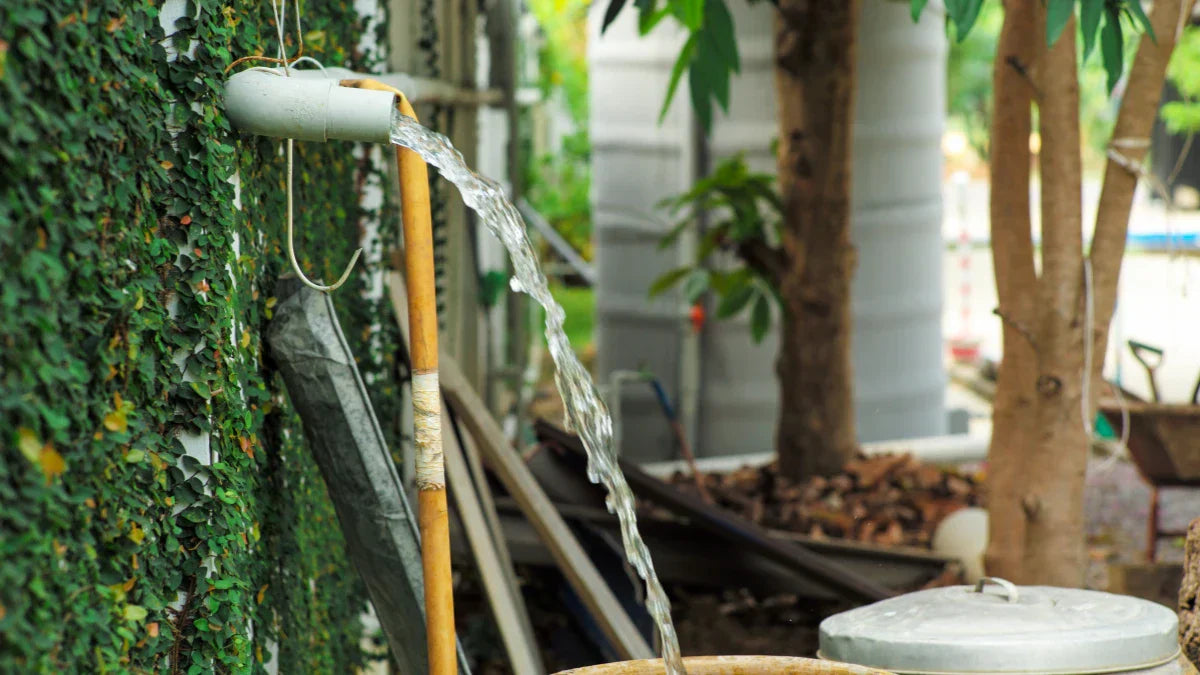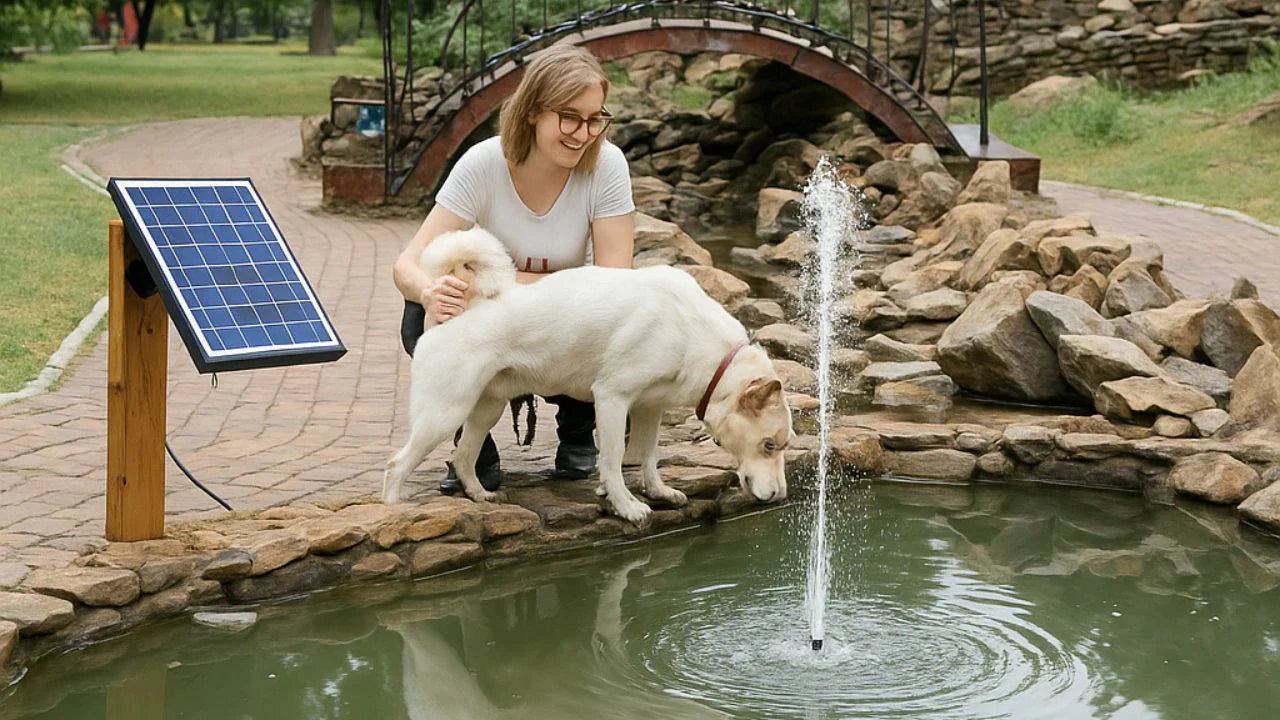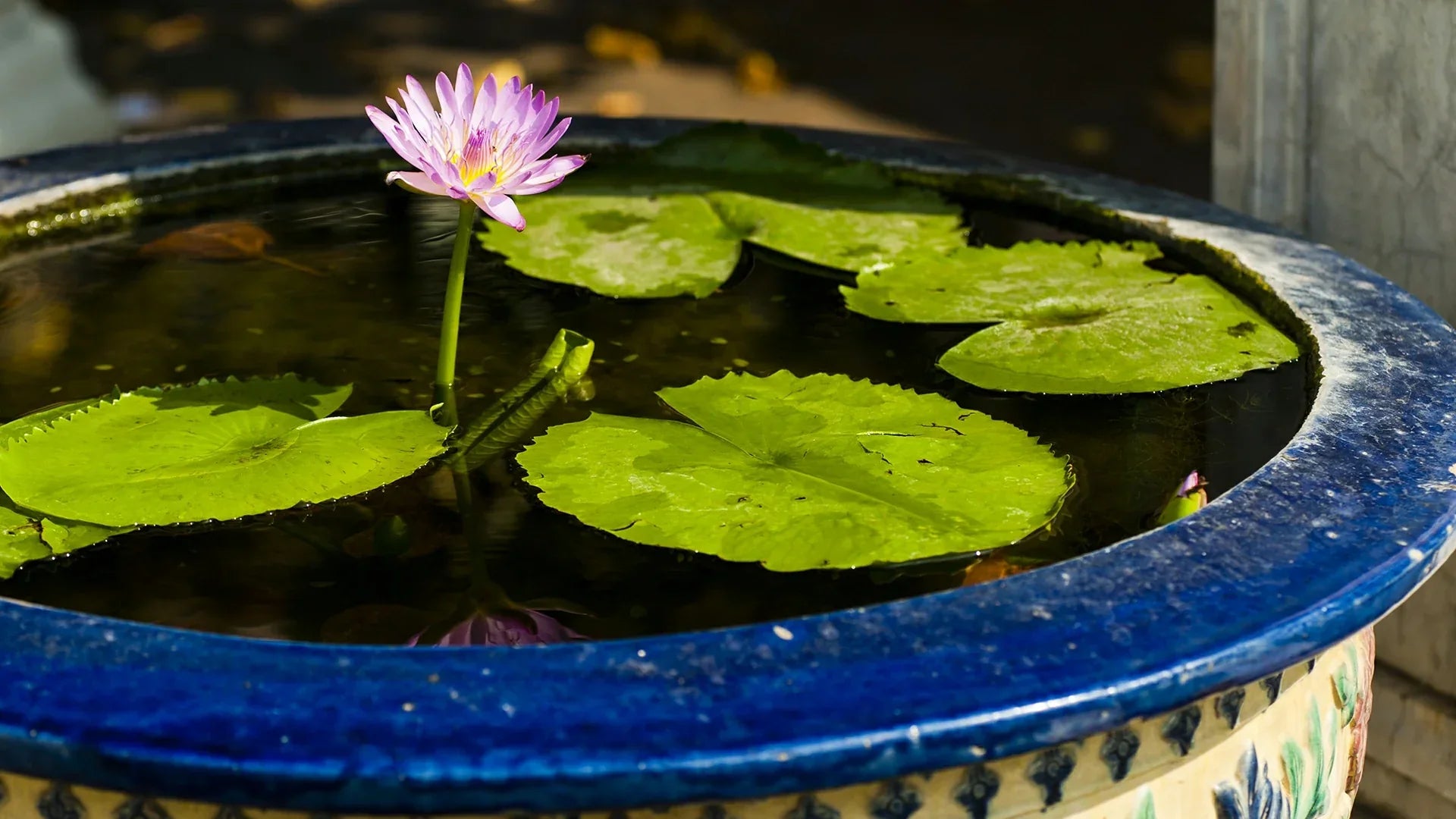If you’ve ever watched rainwater pouring off the roof during a storm, you’ve probably wondered if there’s a better way to use it. For pond owners, there is: channel that water into your pond. With a bit of setup, your backyard pond can double as a rainwater pond, storing and reusing runoff that would otherwise disappear down the drain.
It's a reasonable idea with lots of possibilities. Free water to top up your pond, lower reliance on the tap, and a green way to maintain your garden. The drawback is making sure the system is fish, plant, and wildlife-friendly. Here's how to implement pond rainwater harvesting from scratch.
Rainwater Harvesting Basics
Rainwater harvesting isn't a new thing. Farmers and homeowners have been doing it for centuries in barrels. A pond is different. Instead of a static container, you've got a living system. That means the water that accumulates doesn't just sit around--it gets recycled, nourishes plants, and can be reused throughout the garden.

The main steps are simple: divert roof runoff into the pond, direct the first flush of dirty water around, and let the remaining portion in. As rainwater hasn't got chlorine in it, it's often cleaner for fish and aquatic plants than tap water. For all those who are aiming pond water reuse, it's not just practical but also environment-friendly.
Safe Filtration Solutions
Certainly, rainwater isn't perfectly pure. Roofs accumulate dust, bird droppings, and leaves. If you put all that directly into the pond, you'll be fighting cloudy water all the time. A clean system needs a few barriers:
- Screens or guards on the gutters to catch big debris.
- A first-flush diverter that sends the first dirty gallon or two away from the pond.
- A filter box prior to the water reaching the pump, so fine particles won't clog it up.
Once water is in a pond, circulation makes it healthy. A small solar fountain pump, like those in the Poposoap family, is ideal--it oxygenates the water, circulates it, and hasn't got to have running cables through the garden.
Regulations and Standards
It's worth noting: always refer to local rules. Outside, unless in most places, rainwater is to be welcomed but there might be an overflow or water safety regulations. At least your pond should have an overflow pathway so that it does not flood the garden in a heavy downpour. If vegetables are to be watered with pond water, see that it is safe to use. And remember, wildlife will also be drinking from your pond, so you don't want runoff introducing anything toxic.
Poposoap Rainwater Integration Kit
Poposoap has adopted this idea of rainwater use with equipment designed for ponds. Their filter boxes, for example, give pumps an extra layer of protection against trash. Solar pumps circulate rain-fed ponds without needing mains power, and extension leads simplify solar panels to position in the sunniest spot.
For smaller spaces, Poposoap mini pond kits are remarkably productive. Even a patio container pond the size of a trash can can be a micro rainwater collector and prove you don't need acres of property to make the principle work.
Maintenance Recommendations
Like any pond, a rainwater-supplied system needs regular upkeep. That doesn't mean hours of toil, but it does mean being consistent:
- Clean leaves from downspouts and gutters seasonally.
- Clean and check filter pads monthly.
- Watch water clarity after big storms; pump longer if cloudy.
- Check pumps regularly so they stay covered and clear.
- In winter, drain rainwater feed and bring pumps inside if freezing is common.
The plus is that Poposoap's pumps and filter boxes are extremely simple to clean--most often a matter of a quick rinse--and spares are readily available.
Conclusion
A pond can be purely ornamental. With some foresight, however, it can be part of a green water cycle in your own backyard. Adding rainwater collection to a pond is a way of using less tap water, keeping fish and aquatic plants healthier, and maximizing every storm.
Poposoap’s pumps, filter kits, and solar-powered accessories make the transition simpler, whether you’re managing a koi pond or a small patio bowl. Over time, your rainwater pond becomes both practical and beautiful, proving that conservation doesn’t have to come at the cost of design.
When the next rain falls, imagine that water flowing into your garden instead of escaping. With the right installation, every drop can be part of a more clever cycle of reused pond water.





Leave a comment
All comments are moderated before being published.
This site is protected by hCaptcha and the hCaptcha Privacy Policy and Terms of Service apply.